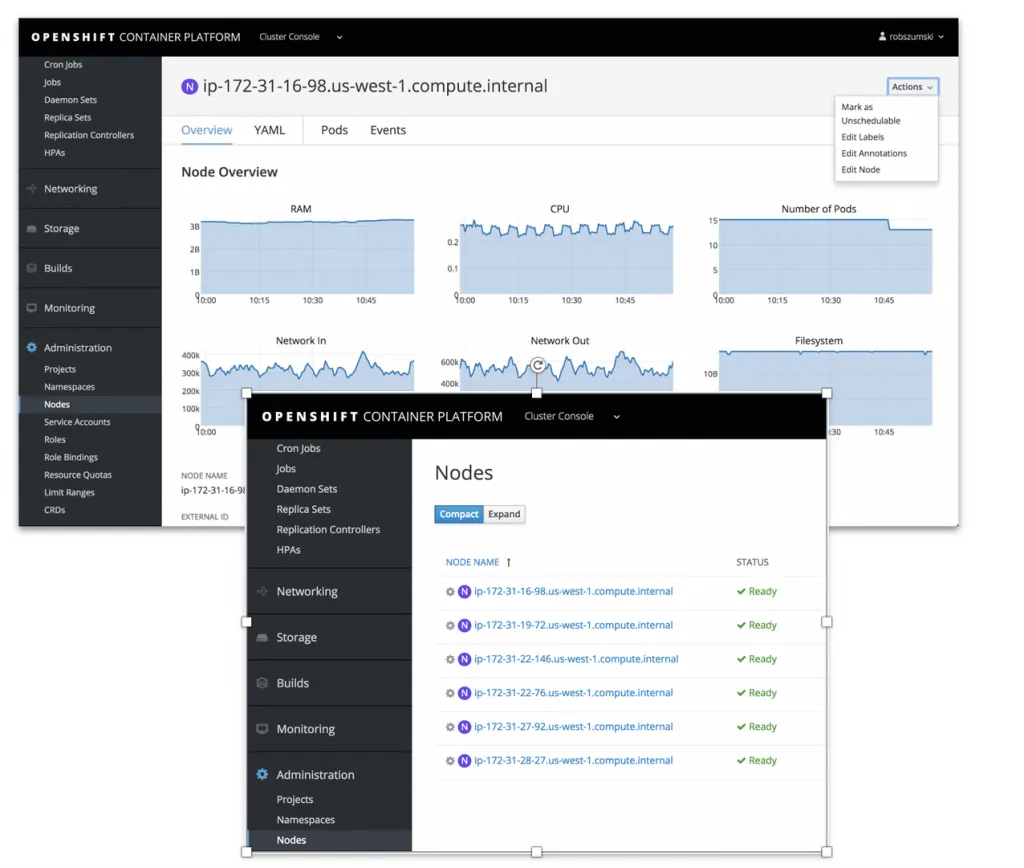
While Red Hat OpenShift makes it easier for teams to implement and run Kubernetes-based Linux container infrastructure, there are scenarios where a team may be too small or spread too thin even to administrate an OpenShift cluster on their own. For these teams, we offer Red Hat OpenShift Dedicated, a fully managed and provisioned service from Red Hat, hosted on AWS. These two services go hand in hand to provide production-grade container-based infrastructure on top of Amazon's worldwide cloud infrastructure.
But what does that actually mean for an IT executive trying to suss out the total costs, savings and optimizations offered by moving to OpenShift Dedicated? Ryan Niksch, Partner Solutions Architect at Amazon, has written an extensive blog entry detailing the exact benefits of using OpenShift Dedicated. That should be some useful information for anyone evaluating the many hosted Kubernetes options available in the marketplace. The piece is full of wisdom like this:
You can take advantage of cost reductions of up to 70% using Reserved Instances, which match the pervasive running instances. This is ideal for the master and infrastructure nodes of the Red Hat OpenShift solutions running in your account. The reference architecture for Red Hat OpenShift on AWS recommends spanning nodes over three availability zones, which translates to three master instances. The master and infrastructure nodes scale differently; so, there will be three additional instances for the infrastructure nodes. Purchasing reserved instances to offset the costs of the master nodes and the infrastructure nodes can free up funds for your next project.
Check out the whole article on the AWS Blog, here.
About the author
Red Hatter since 2018, technology historian and founder of The Museum of Art and Digital Entertainment. Two decades of journalism mixed with technology expertise, storytelling and oodles of computing experience from inception to ewaste recycling. I have taught or had my work used in classes at USF, SFSU, AAU, UC Law Hastings and Harvard Law.
I have worked with the EFF, Stanford, MIT, and Archive.org to brief the US Copyright Office and change US copyright law. We won multiple exemptions to the DMCA, accepted and implemented by the Librarian of Congress. My writings have appeared in Wired, Bloomberg, Make Magazine, SD Times, The Austin American Statesman, The Atlanta Journal Constitution and many other outlets.
I have been written about by the Wall Street Journal, The Washington Post, Wired and The Atlantic. I have been called "The Gertrude Stein of Video Games," an honor I accept, as I live less than a mile from her childhood home in Oakland, CA. I was project lead on the first successful institutional preservation and rebooting of the first massively multiplayer game, Habitat, for the C64, from 1986: https://neohabitat.org . I've consulted and collaborated with the NY MOMA, the Oakland Museum of California, Cisco, Semtech, Twilio, Game Developers Conference, NGNX, the Anti-Defamation League, the Library of Congress and the Oakland Public Library System on projects, contracts, and exhibitions.
Browse by channel
Automation
The latest on IT automation for tech, teams, and environments
Artificial intelligence
Updates on the platforms that free customers to run AI workloads anywhere
Open hybrid cloud
Explore how we build a more flexible future with hybrid cloud
Security
The latest on how we reduce risks across environments and technologies
Edge computing
Updates on the platforms that simplify operations at the edge
Infrastructure
The latest on the world’s leading enterprise Linux platform
Applications
Inside our solutions to the toughest application challenges
Original shows
Entertaining stories from the makers and leaders in enterprise tech
Products
- Red Hat Enterprise Linux
- Red Hat OpenShift
- Red Hat Ansible Automation Platform
- Cloud services
- See all products
Tools
- Training and certification
- My account
- Customer support
- Developer resources
- Find a partner
- Red Hat Ecosystem Catalog
- Red Hat value calculator
- Documentation
Try, buy, & sell
Communicate
About Red Hat
We’re the world’s leading provider of enterprise open source solutions—including Linux, cloud, container, and Kubernetes. We deliver hardened solutions that make it easier for enterprises to work across platforms and environments, from the core datacenter to the network edge.
Select a language
Red Hat legal and privacy links
- About Red Hat
- Jobs
- Events
- Locations
- Contact Red Hat
- Red Hat Blog
- Diversity, equity, and inclusion
- Cool Stuff Store
- Red Hat Summit

